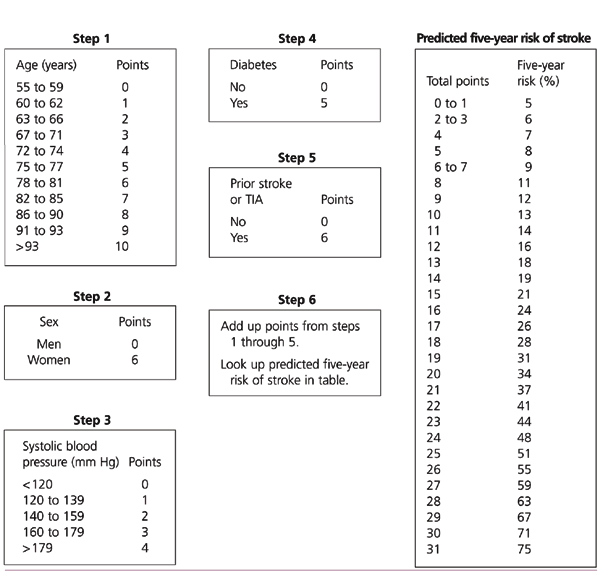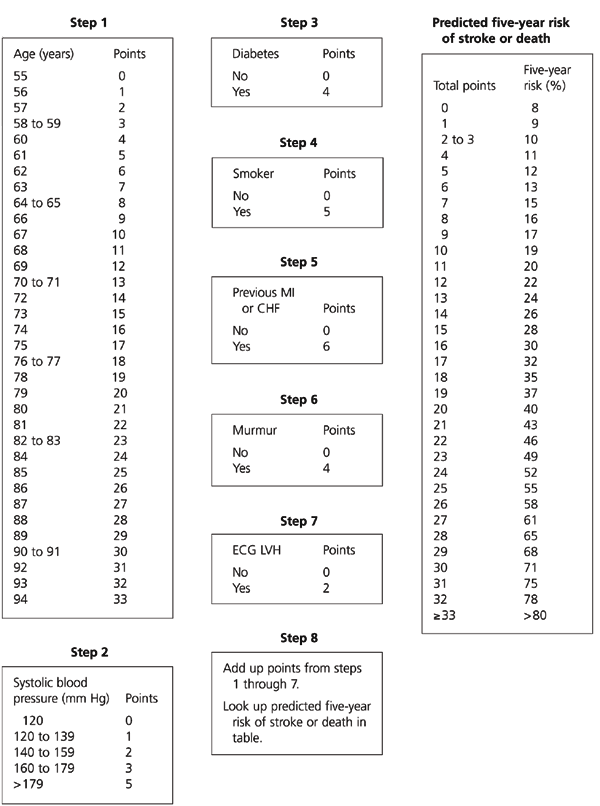
Am Fam Physician. 2004;69(7):1753-1756
As the U.S. population ages and the prevalence of cardiovascular disease increases, the prevalence of atrial fibrillation (AF) is expected to increase from its current level of 2 million persons. Given the risk of stroke in patients with AF, a reliable risk stratification scheme would help identify patients at high risk, especially those who would benefit from therapies such as warfarin. Current stratification schemes may be based on biased studies. Wang and colleagues tested a classification scheme for patients with AF that focused on stroke risk alone and stroke risk or death as outcomes.
Using data from the Framingham Heart Study, the authors identified 705 eligible persons with new-onset AF who were not treated with warfarin at baseline and were used in the creation of the risk scores. Baseline risk factor data included blood pressure measurements, presence or absence of diabetes, current cigarette smoking, valvular heart disease, and left ventricular hypertrophy. Previous myocardial infarction, congestive heart failure, transient ischemic attack, or stroke also were evaluated in the analysis. Warfarin or aspirin use was determined by self-report. Primary outcomes were stroke alone and stroke or death. Analyses were conducted before and after excluding subjects who had received warfarin.

During a mean follow-up of 4.3 years, stroke occurred in 111 persons (13 percent) and stroke or death occurred in 485 persons (56 percent). After excluding those who received warfarin, the analysis yielded 83 strokes and 382 strokes or deaths after 4.0 years. Results of the Cox proportional hazards analyses yielded the following predictors for stroke: female sex, diabetes, and previous stroke or transient ischemic attack. For stroke or death, the following predictors entered the model: smoking, diabetes, previous myocardial infarction or congestive heart failure, heart murmur, and left ventricular hypertrophy. Figures 1 and2 present a scoring system to predict five-year risk of stroke and combined stroke or death.
The results of this study are similar to results of previous studies with regard to risk factors such as diabetes, advancing age, and elevated blood pressure. By deriving clinical risk scores, the current classification scheme can be used to estimate the absolute risk of an adverse event in patients with AF. These results may influence clinical decision-making, particularly in patients who are at especially low or high risk.
